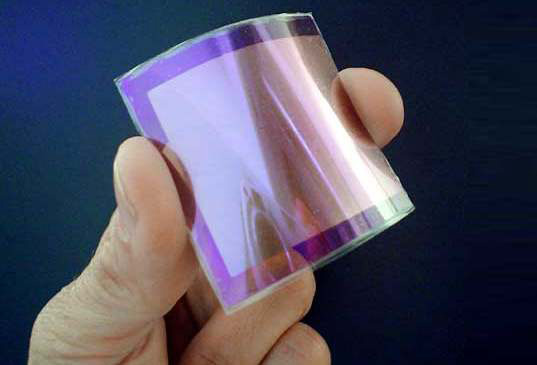 The future hasn’t been looking too bright for thin-film solar companies lately. Persistent high costs and low energy efficiencies have stymied a technology that was once meant to trump traditional crystalline solar panels.
The future hasn’t been looking too bright for thin-film solar companies lately. Persistent high costs and low energy efficiencies have stymied a technology that was once meant to trump traditional crystalline solar panels.
Since the 2008 gold rush that fattened thin-film players like NanoSolar, Optisolar and Miasole, venture investing in the area has petered out, thin-film darling Solyndra nixed its IPO and aspiring solar powerhouse Applied Materials axed its thin-film operations, laying off 500 employees.
But this trend doesn’t seem to have deterred a new $198 million joint venture launched today to chase the thin-film dream: 3Sun, a combined effort between STMicroelectronics, Sharp and renewable power developer Enel Green Power. Together, they will be building a panel manufacturing facility in Italy slated to initially produce at 160-megawatts worth of product every year before scaling to 480 megawatts.
The three companies, which have each committed $92.1 million, first agreed to work together in January but have just entered the operation phase of the agreement. The new factory, planned to be the largest of its kind in Italy, is expected to come online in the second half of next year.
June 5th: The AI Audit in NYC
Join us next week in NYC to engage with top executive leaders, delving into strategies for auditing AI models to ensure fairness, optimal performance, and ethical compliance across diverse organizations. Secure your attendance for this exclusive invite-only event.
Each of the partners brings different assets to the mix. The facility being used in Catania, Sicily is an existing plant owned by STMicro. Sharp also will be bringing its unique triple-junction thin-film technology to the table. It’s already been churning them out in Japan. Enel Green Power has established distribution channels for renewable energy products and will help sell 3Sun’s inventory mostly in Europe and the Mediterranean region.
This is not the first time Sharp — one of several major corporations like Applied Materials that branched into solar in a big way — and Enel have worked together. The two teamed up for a previous joint venture to develop and sell the energy generated by solar arrays in the Mediterranean (incidentally, using cells from the Catania plant). This deal is ongoing, with the new entity planning to produce 500 megawatts of solar power by 2016 and explore new customer bases in the Middle East and Africa.
Thin-film solar, while apparently on the decline in the U.S., is lighter, easier to install, and was eventually supposed to be much more cost effective that crystalline silicon. But silicon prices have plunged to such an extent that using less of it isn’t so compelling given how much less efficient thin-film is at converting sunlight to energy. So why is 3Sun sticking with it?
No doubt Sharp’s emphasis on thin-film technology is playing a major role in the strategy. Already the world’s third largest produce of solar cells, it has the capacity to churn out thin-film cheaply and at huge scale. Also thin-film tends to hold up better than crystalline silicon cells in hot climates, which makes it a more auspicious choice for the regions 3Sun is targeting.
The deal between the three companies suggests that solar technology could be more regionally dependent than previously assumed. While crystalline silicon panels might be more suitable for rooftops in California, thin-film could be the better answer for low-cost, rugged installations in warm climates or the developing world.
